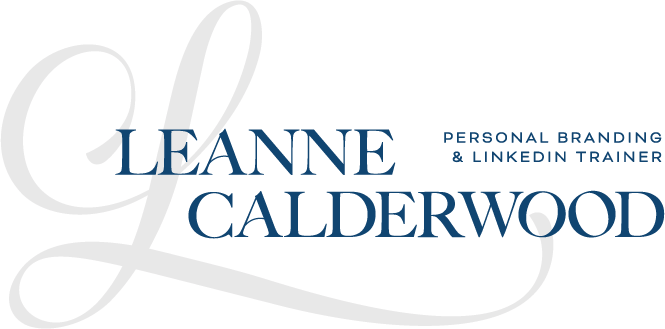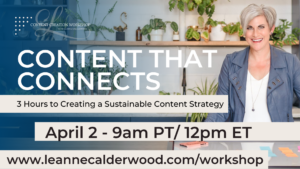In a world where everyone's work is just a click away, standing out isn’t just…

Crafting Authenticity: Mastering the Art of Non-Salesy LinkedIn Content
In an online world awash with pitches and promos, standing out without sounding like a walking billboard on LinkedIn can seem like a tightrope walk over a sea of skepticism. Yet, it’s not only possible; it’s essential for those who want to build genuine connections and grow their influence organically. This blog post will guide you through the nuanced art of creating content that resonates, builds trust, and subtly leads to sales, without ever triggering the dreaded ‘salesy’ alarm.
What is Content Creation?
Content creation serves as the foundation upon which brands, professionals, and influencers build their online presence and connect with their audience. It’s a dynamic process that involves generating ideas, crafting messages, and producing material that is both relevant and engaging to a specific target audience. Content can take many forms—articles, blog posts, videos, infographics, podcasts, and social media posts—each with its unique appeal and purpose.
The Essence of Content Creation
At its core, content creation is about storytelling and value delivery. It’s a strategic art that blends creativity with purpose, aiming to inform, inspire, entertain, or solve a problem for the audience. Whether it’s a deep-dive article exploring industry trends, a tutorial video simplifying complex concepts, or an infographic highlighting key data points, effective content is tailored to meet the needs and interests of its intended viewers.
The Objectives of Content Creation
- Engagement: Capturing the audience’s attention and fostering interaction through likes, comments, and shares.
- Education: Providing valuable information or insights that empower the audience and enhance their knowledge or skills.
- Inspiration: Motivating the audience through compelling narratives, success stories, or innovative ideas.
- Conversion: Gently guiding the audience towards a specific action, like subscribing to a newsletter, downloading a guide, or making a purchase.
Content creation is not just about producing material; it’s about crafting a message that resonates with your audience on a personal level.
It requires an understanding of your audience’s needs, preferences, and challenges, and the ability to address these through compelling content. For businesses and professionals, content creation is a strategic tool for building brand awareness, establishing thought leadership, and driving engagement and sales. In a world where digital noise is constant, the ability to create meaningful, high-quality content is what sets individuals and brands apart, enabling them to shine quietly yet powerfully in their respective spaces.
Where You Can Show Up
Choosing the right platform(s) for your content depends on your content goals, target audience, and the type of content you’re most comfortable creating. Here’s a look at some of the primary stages where content creation can take flight, helping you decide where best to cast your spotlight.
Social Media Networks
-
LinkedIn:
- The premier professional networking site is ideal for B2B content, thought leadership articles, and industry insights. It’s especially powerful for building professional connections, sharing expertise, and engaging with peers and potential clients.
-
Instagram:
- Perfect for visually-driven content such as photos, short videos, and stories. It’s great for brand storytelling, showcasing products or services, and connecting with a younger, image-oriented audience.
-
Twitter:
- Best for timely, concise updates, industry news, and engaging directly with followers through quick, impactful messages. It’s a dynamic platform for sparking discussions and staying on top of trends.
-
Facebook:
- With its diverse user base, Facebook is versatile for sharing longer posts, videos, and creating community groups. It’s beneficial for building community, sharing insights, and engaging with a broad audience.
Blogging Platforms and Websites
-
WordPress:
- A robust platform that offers flexibility for creating and managing a blog or website. It’s ideal for in-depth articles, tutorials, and establishing a central hub for all your content.
-
Medium:
- Offers a sleek, user-friendly interface for writers to publish articles on various topics. It’s great for reaching a built-in audience interested in thought-provoking stories and professional insights.
Video Platforms
-
YouTube:
- The leading platform for long-form video content, perfect for tutorials, vlogs, and educational content. It allows creators to build a dedicated channel for their brand or personal brand.
-
TikTok:
- Dominates the short-form video content space, ideal for reaching a younger audience with quick, engaging, and often entertaining videos.
Audio Platforms
-
Podcasts:
- Platforms like Spotify and Apple Podcasts have become popular for sharing audio content, ranging from interviews and discussions to storytelling and educational content. Podcasts are perfect for creators who excel in verbal communication and want to reach an audience on-the-go.
Specialized Platforms
-
Pinterest:
- A visual discovery engine ideal for lifestyle, DIY, fashion, and travel content. It’s great for driving traffic to blogs or websites through compelling images and infographics.
-
Quora:
- A Q&A platform that allows you to establish expertise by answering questions related to your niche or industry. It’s an indirect way of content creation that builds credibility and visibility.
Each platform offers unique advantages and caters to different types of content and audiences. By understanding the strengths and audience demographics of these platforms, you can strategically choose where to focus your content creation efforts. The key is not to be everywhere but to be where your content can make the most impact, resonate with your target audience, and align with your content creation goals.
The Fine Line of Authentic Content: Pros and Cons
Before diving into the heart of crafting content that connects, let’s set the stage by understanding the advantages and potential pitfalls of focusing on authenticity in your LinkedIn content.
Pros:
✅ Builds Genuine Connections: Authentic content fosters a deeper connection with your audience, laying the foundation for trust and long-term relationships.
✅ Enhances Brand Loyalty: When your content reflects your true self or brand ethos, it resonates more deeply, encouraging followers to become advocates.
Cons:
❌ Time-Consuming: Crafting genuinely authentic content that strikes the right balance can require more thought and time.
❌ Potential for Misinterpretation: The line between personal and professional can sometimes blur, leading to possible misinterpretations by diverse audiences.
Tips for Trust-Building Content
Creating content that establishes trust and doesn’t scream ‘sales’ involves a careful blend of strategy, authenticity, and a dash of subtlety. Here’s how:
-
Lead with Value:
- Always prioritize providing value through your content. Whether it’s sharing industry insights, offering solutions, or inspiring stories, make sure your audience takes away something beneficial.
-
Be Relatable:
- Show your human side. Share your challenges and successes in a way that your audience can relate to, making you more approachable and less like a sales figure.
Overcoming Content Creation Challenges
Addressing the elephant in the room—how to avoid sounding too salesy—requires acknowledging the challenges and tactfully navigating through them.
-
The Balance Dilemma:
- Striking the perfect balance between being informative and engaging without crossing into promotional territory can be tricky. Focus on the 80/20 rule—80% informative and engaging content, 20% promotional.
-
The Authenticity Test:
- Ensuring your content consistently feels genuine and not like a thinly veiled sales pitch demands constant vigilance and a commitment to your true brand voice.
Gently Leading to Sales: The Art of the Soft Call to Action
The truth of content is, we do it to eventually lead to sales (why else would we do it). So one must learn the subtle art of selling, without selling. How do you guide your audience towards a sale without the hard sell? The answer lies in the soft call to action (CTA).
-
Educate, Don’t Sell:
- Instead of directly selling, offer educational content that naturally leads the reader to seek your services or products as the solution to their problem.
-
Use Invitations, Not Commands:
- Phrases like “Learn more about…” or “Discover how we can help…” are invitations that gently guide without pressure.
Incorporating these elements into your content strategy will help you navigate the fine line between being authentically engaging and inadvertently salesy. By focusing on building genuine connections and providing value, you can create a space where your audience feels valued, not sold to. Remember, the key to non-salesy content is not to avoid sales altogether but to weave it into a narrative that prioritizes the reader’s needs and interests. Through a combination of strategic content creation, relatable storytelling, and subtle CTAs, you can transform your LinkedIn presence into a powerful tool for organic growth and genuine engagement.
To leading with authenticity,
Leanne
P.S. The upcoming Content Creation Workshop will help you dial in your authentic messaging, and help you create content for months to come! Save your spot here for the April 2nd workshop.
RELATED – Maximize Your Impact: Time-Saving Strategies for Content Creation
RELATED – Conquering Content Creation Fear: Overcome Imposter Syndrome and Shine on LinkedIn
RELATED – Overcome Overthinking: The Introvert’s Guide to Confident Content Creation on LinkedIn
RELATED – Dive In and Stand Out: Navigating the Crowded Digital Waters of Content Creation




